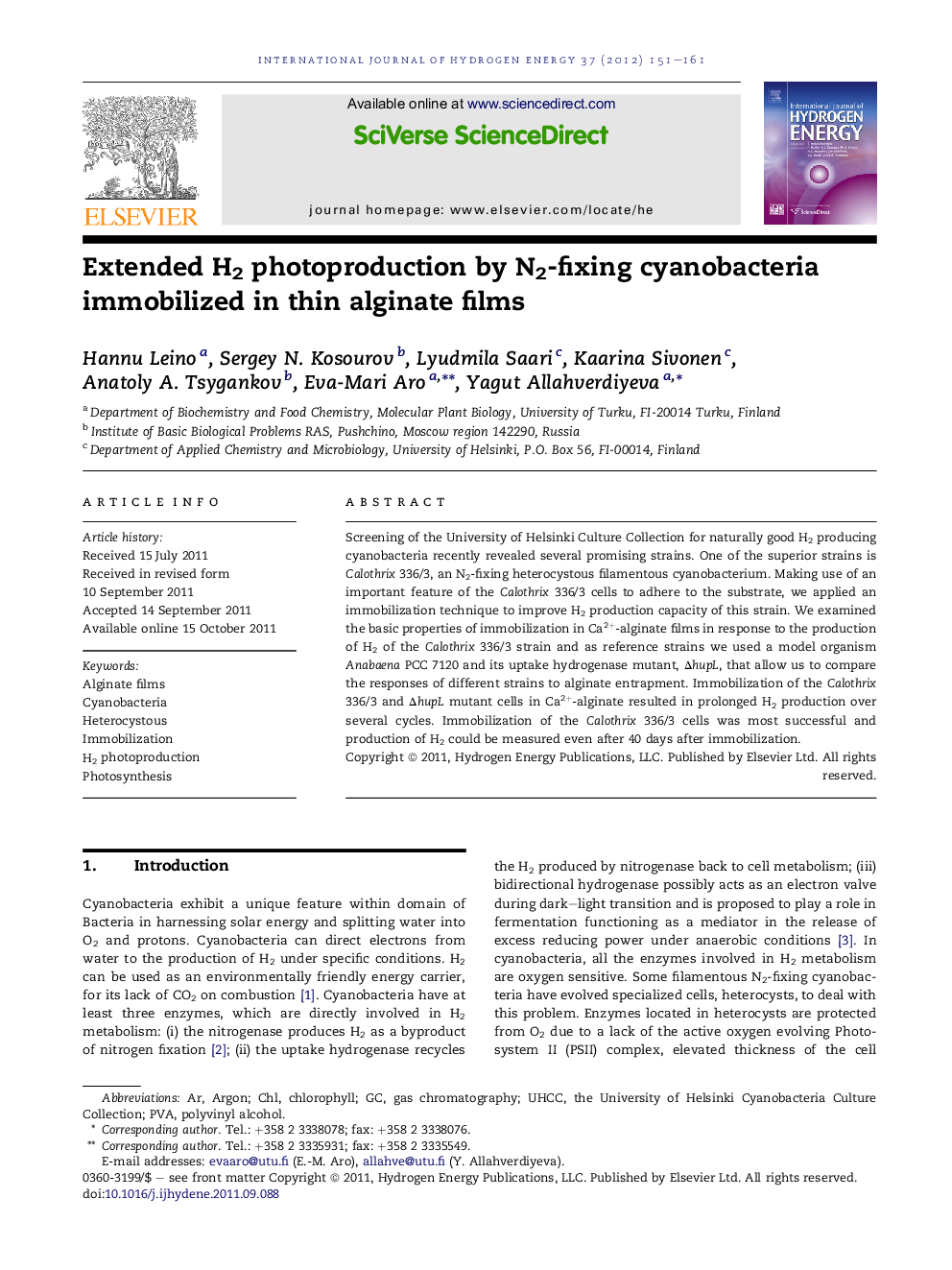| کد مقاله | کد نشریه | سال انتشار | مقاله انگلیسی | نسخه تمام متن |
|---|---|---|---|---|
| 1277132 | 1497568 | 2012 | 11 صفحه PDF | دانلود رایگان |

Screening of the University of Helsinki Culture Collection for naturally good H2 producing cyanobacteria recently revealed several promising strains. One of the superior strains is Calothrix 336/3, an N2-fixing heterocystous filamentous cyanobacterium. Making use of an important feature of the Calothrix 336/3 cells to adhere to the substrate, we applied an immobilization technique to improve H2 production capacity of this strain. We examined the basic properties of immobilization in Ca2+-alginate films in response to the production of H2 of the Calothrix 336/3 strain and as reference strains we used a model organism Anabaena PCC 7120 and its uptake hydrogenase mutant, ΔhupL, that allow us to compare the responses of different strains to alginate entrapment. Immobilization of the Calothrix 336/3 and ΔhupL mutant cells in Ca2+-alginate resulted in prolonged H2 production over several cycles. Immobilization of the Calothrix 336/3 cells was most successful and production of H2 could be measured even after 40 days after immobilization.
► The Calothrix 336/3 cells entrapped in Ca2+-alginate films produce substantially more H2 at much longer time course.
► Immobilization in Ca2+-alginate films stabilizes the filamentous cells, has a positive effect on cell viability, and reduces the growth of cells.
► CO2 is an important determinant for efficient H2 production in immobilized Calothrix 336/3 cultures.
Journal: International Journal of Hydrogen Energy - Volume 37, Issue 1, January 2012, Pages 151–161